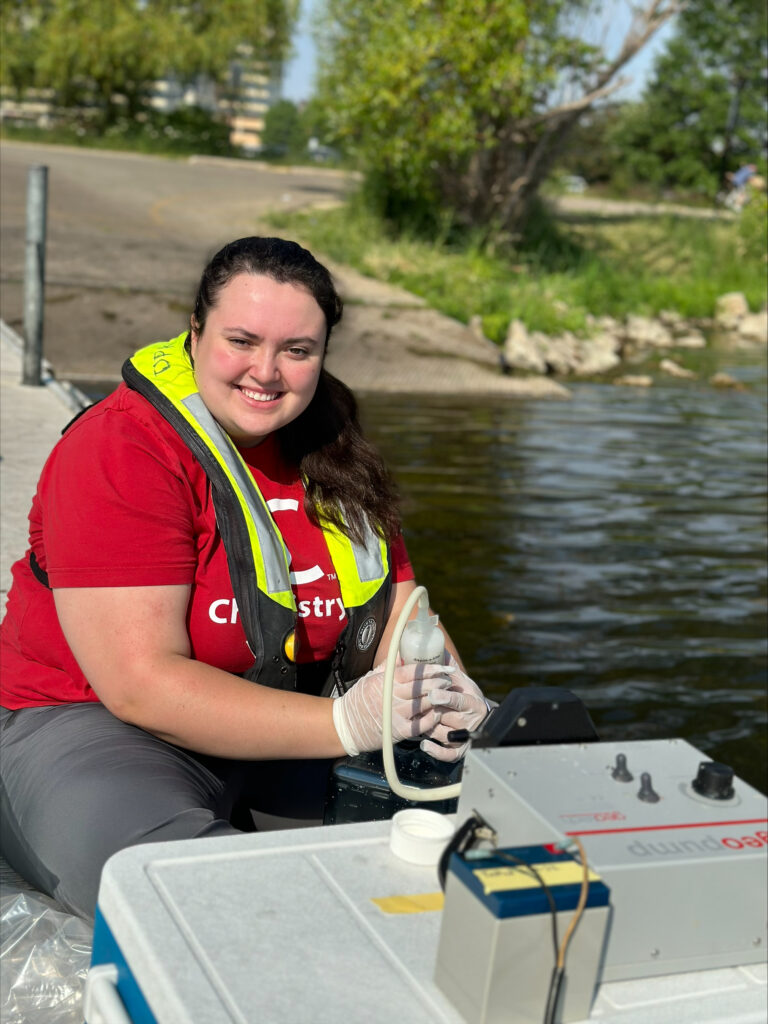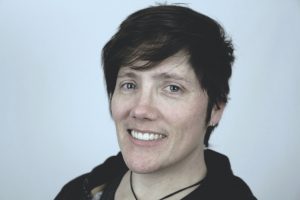Mercury and microplastics research provides new experiences and scientific insights
By Kara Eppard, Freshwater Collaborative summer research student
This summer, 31 students from across the country were chosen for the University of Wisconsin-Madison’s Freshwater@UW Summer Research Opportunities Program, which is affiliated with Wisconsin Sea Grant, the University of Wisconsin Water Resources Institute and the University of Wisconsin-Madison Graduate School. Many of the students provided reflections on what they learned. We’ll share several over the coming months. Here’s Kara Eppard, an undergraduate senior in chemistry and biology from Bridgewater College, Virginia.

Kara Eppard, Freshwater@UW Madison scholar, collecting water from Lake Mendota. Image credit: Grace Armstrong
Participation in the Freshwater@UW-Madison program allowed me to continue to develop my research skills, prepare for my future academic and career endeavors, as well as develop many professional and social relationships with my peers at the U.S. Geological Survey (USGS) and within the Freshwater program, instilling connections that will last throughout my career.
Through this program, I worked on a project in conjunction between the university and the USGS. Under the supervision of Sarah Jensen, I studied the adsorption of mercury to microplastics. I was exposed to multiple laboratory instruments I had not previously worked with.
I used a Raman microscope to analyze different plastics and establish a brief spectral library of common plastics for the lab. I used that library to analyze the particles present in environmental microplastic samples that were provided by collaborators and determined what polymer types were present.
I then completed a series of incubations with microplastics (polystyrene, polyethylene, polymethyl acrylate and environmental microplastic samples) and inorganic mercury. These incubations were conducted in different matrix conditions that replicated freshwater environments. I used a buffer made in the lab and collected water from both Madison’s Lake Mendota and the Yahara River (a tributary of Mendota). I used a Brooks-Rand MERX-T instrument to analyze inorganic mercury concentrations at 0 to 24 hours of incubation. The differences in mercury concentration of the matrix between the two times indicated if the microplastics were absorbing mercury or not, and if so, to what extent.
My research yielded interesting insights. I found that microplastics in some cases do absorb mercury, however, the specific polymer type and the matrix influences the sorption effects. The most interesting insight I found was that UV weathering of microplastics amplified their absorption effects!
Outside of my research time, the program also provided me many opportunities for professional development. Thanks to the hard work of program leader Ali Mikulyuk, each week I was able to attend professional development seminars. I gained insight into grad school admission processes, what to expect in grad school and the process of obtaining funding. I also got to learn about career opportunities present with federal employment. Science outreach and communication was one of the important topics we were able to discuss, learning the importance of the communications between scientists and the communities that have history and knowledge on their topics, or are affected by their research. I found this highly valuable.
Other development opportunities included a graduate fair for the college, rapid research exchange with German researchers and the poster presentations at the end of the program.
I am so thankful for the Freshwater Program and all the knowledge and experiences it provided me!
The post Mercury and microplastics research provides new experiences and scientific insights first appeared on Wisconsin Sea Grant.
Blog | Wisconsin Sea Grant
https://www.seagrant.wisc.edu/blog/mercury-and-microplastics-research-provides-new-experiences-and-scientific-insights/


